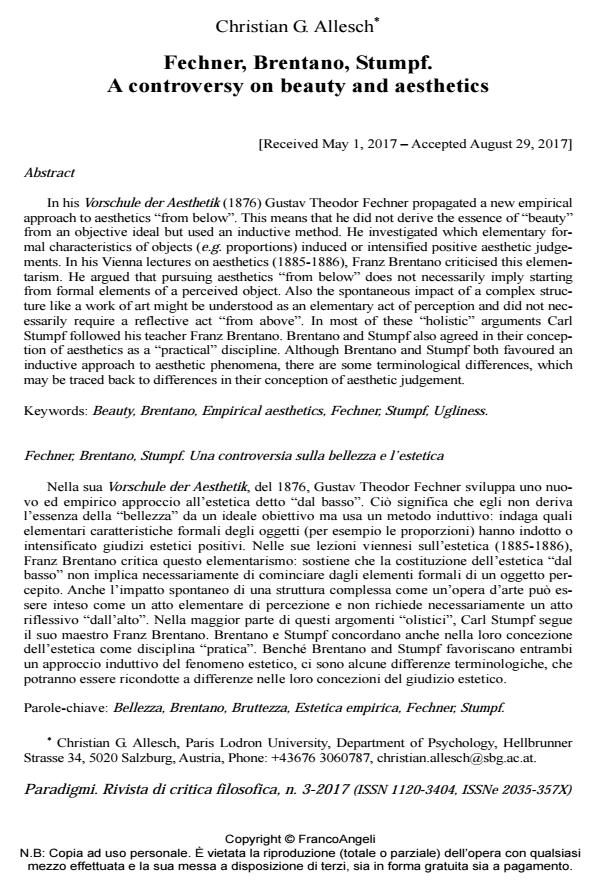Fechner, Brentano, Stumpf. A controversy on beauty and aesthetics
Journal title PARADIGMI
Author/s Christian G. Allesch
Publishing Year 2017 Issue 2017/3
Language English Pages 13 P. 11-23 File size 171 KB
DOI 10.3280/PARA2017-003002
DOI is like a bar code for intellectual property: to have more infomation
click here
Below, you can see the article first page
If you want to buy this article in PDF format, you can do it, following the instructions to buy download credits

FrancoAngeli is member of Publishers International Linking Association, Inc (PILA), a not-for-profit association which run the CrossRef service enabling links to and from online scholarly content.
In his Vorschule der Aesthetik (1876) Gustav Theodor Fechner propagated a new empirical approach to aesthetics "from below". This means that he did not derive the essence of "beauty" from an objective ideal but used an inductive method. He investigated which elementary formal characteristics of objects (e.g. proportions) induced or intensified positive aesthetic judgements. In his Vienna lectures on aesthetics (1885-1886), Franz Brentano criticised this elementarism. He argued that pursuing aesthetics "from below" does not necessarily imply starting from formal elements of a perceived object. Also the spontaneous impact of a complex structure like a work of art might be understood as an elementary act of perception and did not necessarily require a reflective act "from above". In most of these "holistic" arguments Carl Stumpf followed his teacher Franz Brentano. Brentano and Stumpf also agreed in their conception of aesthetics as a "practical" discipline. Although Brentano and Stumpf both favoured an inductive approach to aesthetic phenomena, there are some terminological differences, which may be traced back to differences in their conception of aesthetic judgement.
Keywords: Beauty, Brentano, Empirical aesthetics, Fechner, Stumpf, Ugliness.
Christian G. Allesch, Fechner, Brentano, Stumpf. A controversy on beauty and aesthetics in "PARADIGMI" 3/2017, pp 11-23, DOI: 10.3280/PARA2017-003002